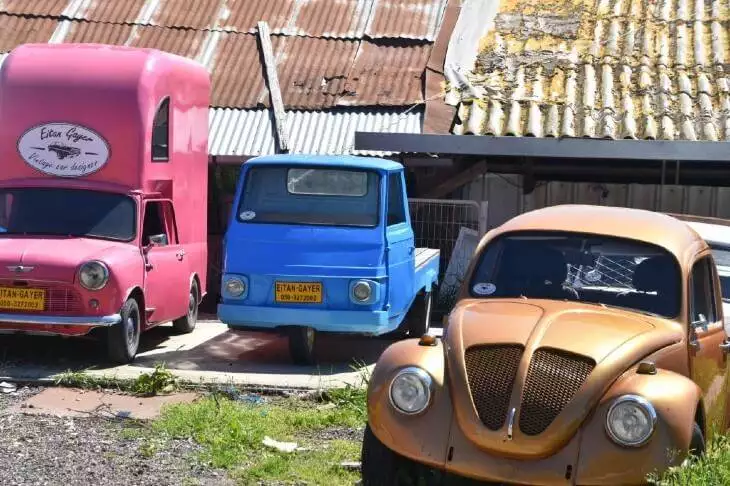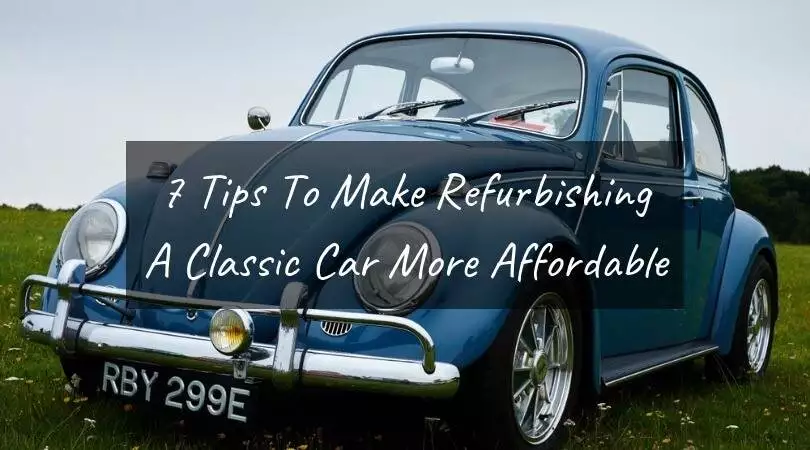For gearheads, antique enthusiasts, and classic car aficionados, a project car can be one of the greatest hobbies in the world. Project cars can help restore an ugly old car back to its original beauty and teach you a vast amount of knowledge about how cars work.
If you’ve always attended car shows and wished you could partake in the excitement of creating a vintage car that brings awe and marvel to spectators, try it. While this hobby can be costly, a great project car can be a lifelong investment. There are always ways to budget and save money on your restoration.
If you have an opportunity to own and restore a classic car, do not let this chance slip away. Even if it’s your first restoration, there are plenty of ways to make refurbishing a classic easier and more enjoyable.
More...
1. Do Your Research On The Potential Project Make And

If you find a rare model, this could potentially mean great exposure and resale value, but it may limit available parts. Before you tow your new project home and park it in your garage, make sure you can afford and find the parts you’ll need to get it running and look beautiful. When it comes to the interior, you can always excellent authentic replicas.
Educate yourself on how to shop for a used car and what to look for, so you make a worthwhile investment.
2. Know Your Purpose And Set A Plan
If your goal is to enter car shows, that’s great! It’s also wonderful if you plan on enjoying your car by taking a long drive through the backroads or a short adventure through town. While car shows can help you build a knowledgable and helpful friend-base, restoring a car to show quality has different objectives than a car you just want to restore to running condition. You can drive a matte finish, primer Chevy Camaro to the store no problem, but you may not want to enter it in a local car show. Keep your goals in mind and fulfill them accordingly.
3. Resell The Parts You Don’t Need
If you buy a second car just for parts, but you don’t need all of them, try reselling them online. Other car hobbyists will be happy to take your extras and use them to make their cars look great.
You can create a website and register your domain name and then post it to your local car forum or social media accounts to get buyers interested.
By selling what you don’t need, you can earn money for some of the parts and equipment you don’t have.
4. Get Help From Friends
Classic car enthusiasts love to check out what’s beneath the hood of other cars. And they got into restoration because they love working with their hands. Don’t hesitate to ask one of your car friends to help out. You’ll learn a lot and avoid some mistakes by listening to others.
Other car restorers may also have some of the equipment you need but don’t own. While you may want to cover the cost of something like paint or oil, you maybe ask your friend if you can use his airbrush equipment sometimes. He’ll likely say “yes.”
5. Prioritize And Think Strategically

Save yourself time and money by restoring your car in the right order. If your car has rust, but you’re dying to see it shine, don’t jump into the painting phase right away. Take the time to sand and remove the rust so it doesn’t become a larger problem later on.
If you buy a red car, but you love the way the same model looks in blue, you may have to keep it red to save money. Changing a car’s color will always result in more work, more time, and more money. Decide if you can appreciate your cherry red car before buying that candy blue paint.
6. Buy Quality Equipment
Many first-time car restorers make the mistake of not investing in quality equipment. They panic when they see the price tag and opt for the chintziest choice. Well, having to buy two belt sanders because you burnt out the motor on the first one will always cost more than buying better quality from the get-go.
When it comes down to it, quality tools will last a lifetime or more. Make sure you read reviews and find the right tools for your project. If you plan ahead, you can also avoid the ‘emergency tax’ of needing the tool immediately.
7. Set and Budget Aand Stick To It
When you’re researching your parts, make sure you look at the cost of other restoration equipment you’ll need. You want to have a realistic budget that allows you to do the work correctly. Set your budget and allow for costs you may not consider. I suggest adding an additional 20 percent to give you some wiggle room when it comes to those elements that are hard to find, didn’t think of, or you have to splurge on.
You will also want to do-it-yourself whenever you can, but know when to pay a mechanic. You don’t want to do permanent or more costly damage undertaking a repair you’re unfamiliar with.
Restoring a car back to its former glory may be one of the most rewarding tasks you ever accomplish. Don’t rush the process or feel pressured to make the car 100% authentic. Your project car should have some character and reflect the time you’ve spent on it.
